
IFIC and its international partners meet a milestone in detector instrumentation for LUXE and beyond
IFIC has become a leading institution for pioneering technologies and detector R&D for silicon-based high granular calorimeters for LUXE, dark matter and future lepton collider experiments
Accesing experimentally to uncharted quantum regimes in strong-field QED experiments
Quantum Electrodynamics (QED) is a fundamental component of the Standard Model of particle physics, which describes the interactions between matter and light. While QED is celebrated for its precision—enabling measurements with remarkable accuracy—there exists a domain where its predictions become exceedingly challenging: strong-field QED.
When electromagnetic fields reach extreme levels that surpass the Schwinger limit, fascinating phenomena can occur, including the creation of electron-positron pairs from the vacuum itself. This enigmatic regime has been theorized for over 70 years, but only recent advancements in laser technology are making experimental exploration possible.
Enabling the experimental study of this regime will open up scrutiny of the quantum realm in regimes that have never been explored and where our tools for calculating phenomena are no longer valid. The experimental study of strong-field QED could very well ignite a revolution in both particle physics and our comprehension of the cosmos!
In 2022, the IFIC joined the LUXE experiment—an ambitious project set to take place at the Deutsches Elektronen-Synchrotron (DESY) in Germany. By utilizing a high-energy electron beam alongside a powerful laser, LUXE aims to investigate the frontier of strong-field QED. This groundbreaking venture promises not only to deepen our understanding of particle interactions but also to potentially unveil new physics beyond the Standard Model. Moreover, profiting from the strong-field QED phenomena produced in the interaction point of LUXE, which provides very intense and high-energy photon beams, it also aims to discover elusive particles that could provide insight into dark matter feebly interacting with photons, potentially unlocking some of the universe’s mysteries. With a collaboration of approximately one hundred scientists from across Europe, LUXE stands on the brink of discovery!
One unique aspect of LUXE is its exploration of the non-linear Breit–Wheeler process, which enables the production of electron-positron pairs from photon interactions. This phenomenon is not only fascinating but also presents a significant experimental challenge. As the energy of the incoming photons increases, detecting these events requires advanced detector technologies. In particular, calorimeter systems are crucial to the LUXE physics program, playing a pivotal role in detecting and analyzing particles such as positrons and electrons. These systems are specifically designed to meet high demands for precision, featuring high granularity for excellent position resolution and a small Molière radius to enhance spatial resolution and superior energy resolution. The combination of these characteristics is crucial for measuring energy spectra and the positions of individual showers created by particle interactions.
For LUXE, two electromagnetic calorimeter systems, known as ECAL-E (for electrons) and ECAL-P (for positrons), have been developed. These specialized systems provide detailed event-by-event reconstruction, essential for understanding phenomena with low to moderate particle multiplicities. However, challenges arise when multiplicities reach around 100 per event, leading to overlapping showers that complicate data interpretation and analysis.
Efficient background suppression and precise signal reconstruction are vital to overcoming these challenges. Strategies include optimal shielding, innovative chamber designs, and the use of highly granular sandwich calorimeters composed of semiconductor sensors and tungsten layers. The high granularity enables scientists to distinguish between overlapping showers, allowing them to extract valuable insights from each experiment.
In conclusion, although LUXE faces significant challenges in particle detection, the integration of cutting-edge calorimeter systems holds the key to unlocking exciting discoveries in high-energy physics, ultimately expanding our understanding of the universe.
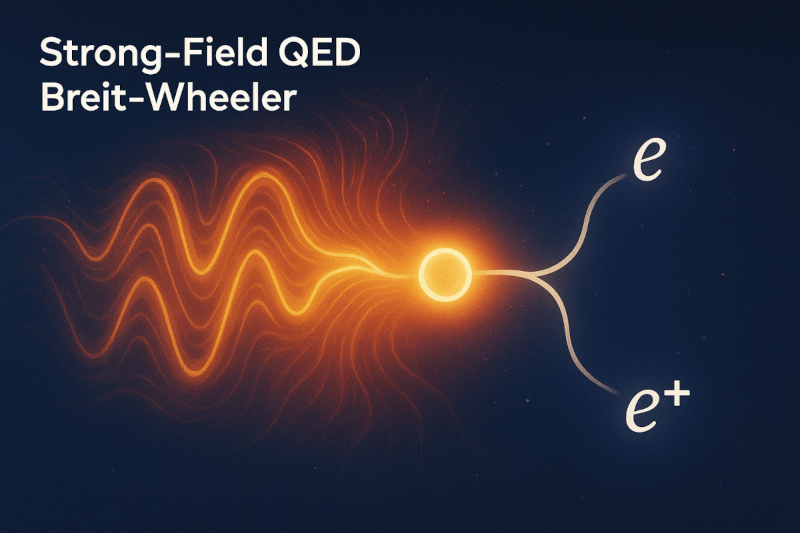
Experimental challenges for LUXE detectors: the role of IFIC and the High Granular and compact silicon calorimetry
One standout contribution to the instrumentation of LUXE comes from the IFIC research team in Spain, which is making significant progress on two groundbreaking projects: the ECAL-E and ECAL-P calorimeters. In particular, the IFIC team led by Adrián Irles, member of the AITANA group, is spearheading the international effort for research and development on sensor hybridization and assembly for the two calorimeters to be used in LUXE. This effort on advanced silicon calorimeters is also driving the R&D for future experiments at Lepton Colliders (Higgs Factories) and detector proposals for Dark Matter Experiments (Lohengrin, LUXE-NPOD, etc.).
The ECAL-E, based on SiW-ECAL technology, is designed to integrate seamlessly within the calorimetric system of future lepton colliders, incorporating both electromagnetic and hadronic sections. What sets the ECAL-E apart is its ability to leverage high granularity and integrated readout technologies aimed at maximizing the efficacy of Particle Flow techniques—an essential factor for high-energy physics experiments. This innovative detector boasts lateral and longitudinal density levels that are 2 to 4 times greater than those of the CMS HGCAL, which is currently under construction for the LHC upgrade. This exceptional density enables precise tracking and measurement of particle interactions, positioning LUXE at the forefront of research in this exciting field. The ECAL-E team comprises groups from CERN, France (IJCLab, LLR-Ecole Polytechnique), Germany (DMLab), Japan (University of Tokyo), South Africa (NRF), South Korea (SKK University), and Spain (IFIC CSIC/UV).
The development of the ECAL-P calorimeter is particularly noteworthy. Based on the LumiCal design, it aims to push the envelope of compactness to suit the stringent spatial constraints of forward detector regions at Future Colliders. Here, the ingenuity of the IFIC team shines through as they work to minimize auxiliary components, focusing on reducing bonding material while ensuring robust performance. In a remarkable achievement, the IFIC has successfully produced 20 Compact Silicon Sandwiches (CSIS), crucial to the ECAL-P prototype, which was recently tested in an electron beam at DESY. With a thickness of just 5.6 cm and a depth of 12 radiation lengths (X₀), this prototype stands as the most compact granular calorimeter built to date—a game changer for the LUXE experiment and future calorimetry endeavors across European projects. The ECAL-P team comprises groups from Germany (DESY), Israel (Tel Aviv University and Weizmann Institute), Poland (Warsaw and Krakow AGH Universities), Romania (Bucharest ISS), and Spain (IFIC).
The advancements made in the hybridization techniques for both calorimeters underscore the leading role of IFIC in the field under the guidance of A. Irles. The team collaboration has not only achieved substantial technical milestones but also laid the groundwork for future research and development within the broader DRD6 collaboration of CERN. These innovations promise to enhance our understanding of fundamental physics and contribute to the development of next-generation particle detection technologies.
As we look toward the future, the work being done with silicon-based electromagnetic calorimeters not only confirms the dedication of the IFIC team but also sparks excitement for the potential discoveries that lie ahead in the quest to unravel the universe’s mysteries.
From the conceptual idea to the realization
Accelerated view of the process of silver-epoxy based bonding solutions for highly compact calorimeter systems. This solution, inspired by the CALICE collaboration solution for the SiW-ECAL, has been developed by the AITANA group at IFIC. This is performed in the TARDIS-Lab of IFIC, which has become the production and integration hub of calorimeters for LUXE.
© A. Irles
With a focus on creating cutting-edge solutions for the assembly of silicon sensor pads in highly integrated or compact (or both!) calorimeter readout systems , we are not just assembling components; we are building the future of high-granularity calorimetry. Our work spans the construction of detectors for the LUXE experiment and R&D activities on silicon calorimetry projects with the DRD6 Collaboration, showcasing our commitment to pushing the boundaries of knowledge.
Over the past five years, our team has been working on bringing new expertise and research lines to IFIC, first bringing fresh expertise on detector instrumentation in an area never explored by IFIC (high-granular calorimetry) and later by positioning IFIC and Spain as prominent participant in the LUXE experiment, which aims to open a new field of experimentation and our understanding of the quantum world. This has positioned IFIC as a leading institute in silicon sensor for calorimetry R&D oriented to experiments with lepton beams globally. A standout feature of our advancement is our new clean room— a.k.a.TARDIS-Lab —compliant with ISO7 standards. It provides a highly clean environment (compatible with ISO5 on small-size particle content) for characterizing, testing, and hybridizing silicon sensors with innovative silver-based epoxy solutions. The meticulousness of our work is crucial as we prepare to unveil groundbreaking technologies for future lepton colliders and other experiments.
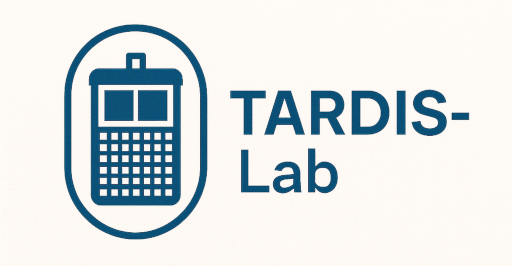
One of our most exciting initiatives is our collaboration with international partners in an intensive campaign to produce Compact Silicon Sandwich (CSIS) modules for the LUXE ECAL-P. These sophisticated modules are composed of single 90x90x0.32mm³ PiN silicon sensors, expertly designed to connect to specialized readout ASICs. The intricate interplay of technology is reinforced with precision-engineered carbon-fiber film, providing the mechanical integrity needed for our ambitious designs. The challenges of stringent mechanical requirements have pushed our creativity and forced us to develop new skills in mechanical integration.
On June 9, 2025, together with our international partners of the ECAL-P for LUXE (Tel Aviv University, DESY, AGH Krakow University, Warsaw University, ISS of Bucharest) we proceeded to the assembly of the first ECAL-P prototype at DESY. Together, we unveiled the most compact calorimeter based on silicon sensors to date, achieving a remarkable 12 radiation lengths tower of 3.5mm thick (1 X_0) tungsten layers interleaved by 1.2mm gaps where the CSIS are hosted. Over an intense week and a half, our detector captured hundreds of millions of beam events, operating at remarkable trigger rates and data-taking capacities: recording up to 2.5kHz triggers, data throughput between ASICs and integrator FPGAs of 0.9Tbps, and data transfer to the DAQ computers of about 2Gbps.
All events were recorded in synchronization with the latest ALPIDE telescope at DESY, utilizing state-of-the-art technologies (AIDA TLU, EUDAQ2, Corryvreckan) to make possible a smooth and straightforward online event reconstruction. The data collected—over 40 terabytes—provides a treasure trove of information that will illuminate the path for future developments and the deep understanding of electromagnetic showers photographed by our detectors. It will also pave the road for the instrumentation of the LUXE experiment.
As we move forward, the journey of the IFIC group is not just about the technology we create, but also about the questions we aim to answer. With each milestone reached, we contribute to a greater understanding of the fundamental forces that shape our universe.
At IFIC, this has been a long-standing effort, not without its stumbles, that bore fruit this year with this milestone (the first of many). This achievement would not have been possible without the enthusiastic and generous efforts this year and in past years of Melissa (PhD), César (Eng.), Roberto (TFG), Shan (postdoc), Jesús (PhD in March), Ferrán (TFM), Carlos (Eng.) and Josep (TFM), as well as the full support of the AITANA group at IFIC. Of course, the support of the mechanics service (key on the ptototyping and precision mechanics studies), the electronics service (key on the installation and debugging of sensor characterization and handling tools), the informatic service (thanks to the support given in space and computing resources at gluon, which will be used intensively now that we have the data!), and the management/maintenance departements (which make possible almost everything else… which is the majority!).
Together with our international partners, IFIC strives to inspire the next generation of researchers who will continue this remarkable journey.
A. Irles, leader of the LUXE-DRD6 group of IFIC
and deputy coordinator of the DRD6-WP1
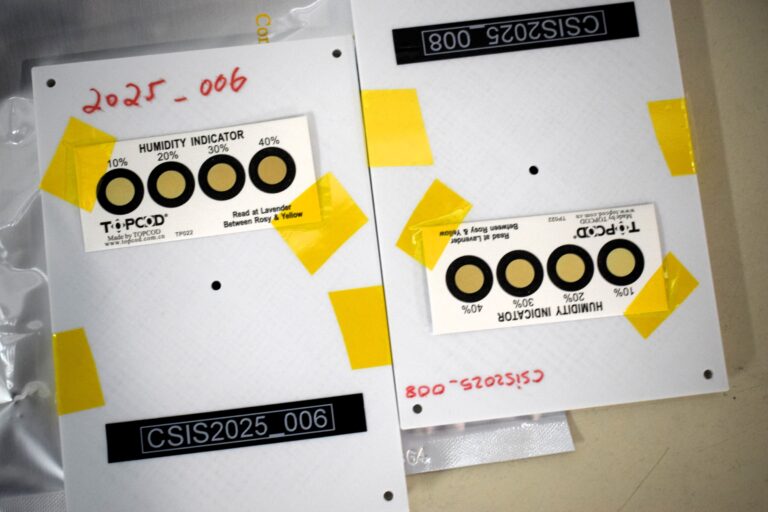
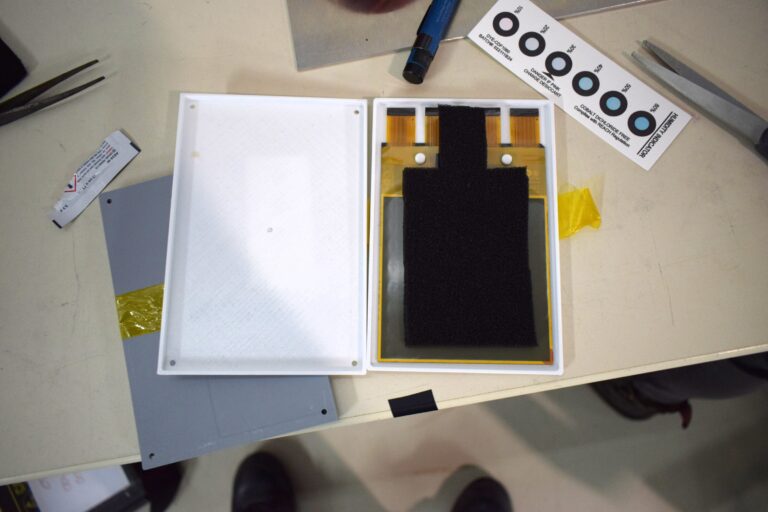
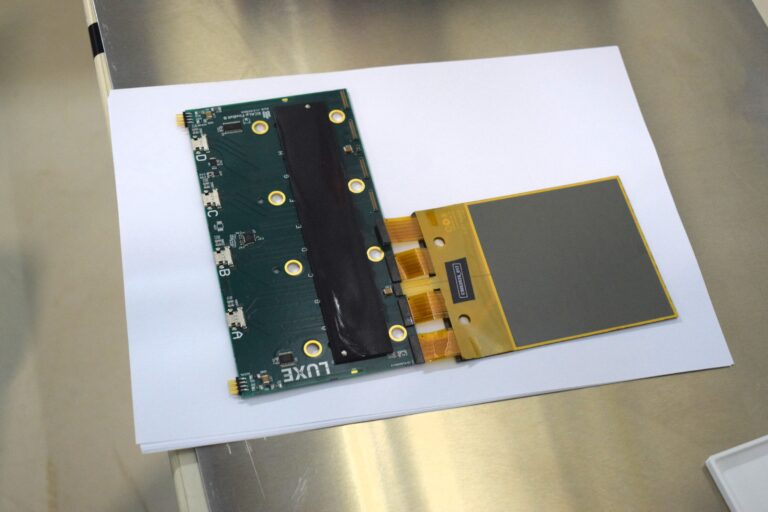
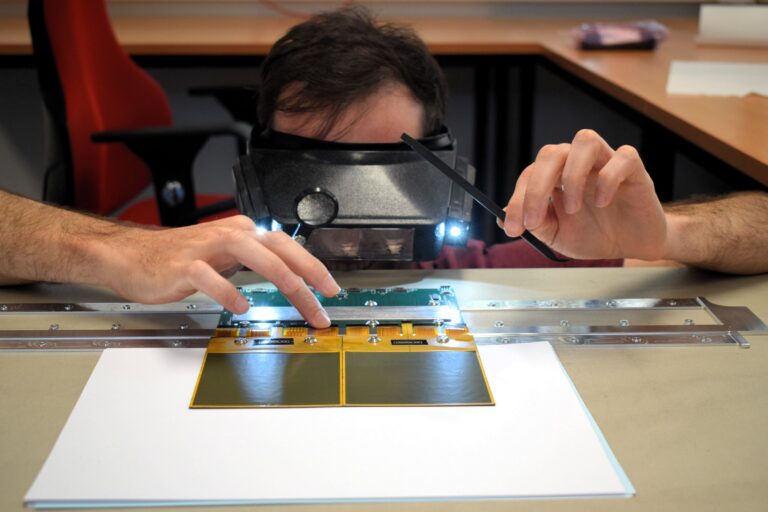
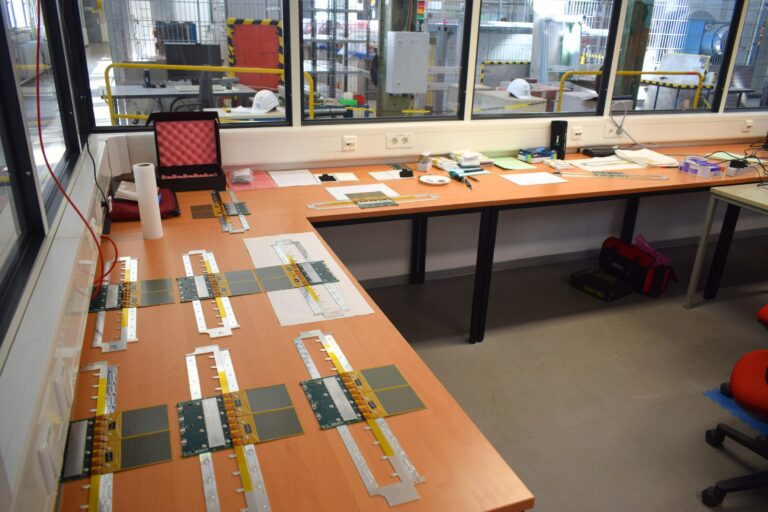
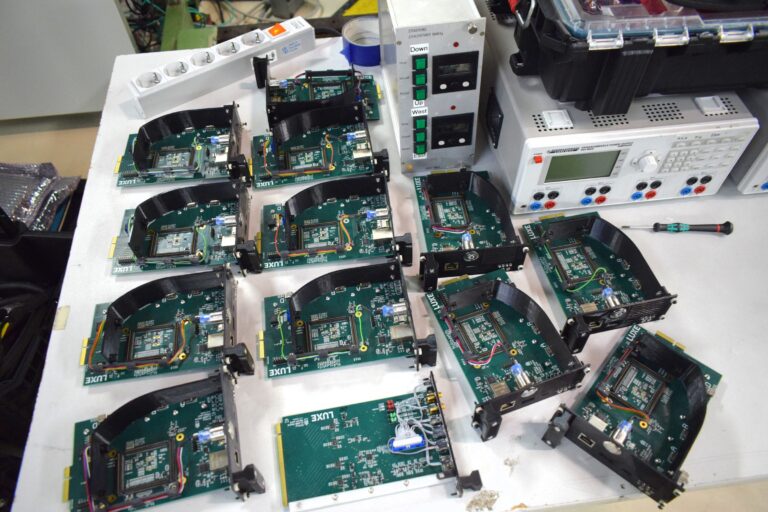
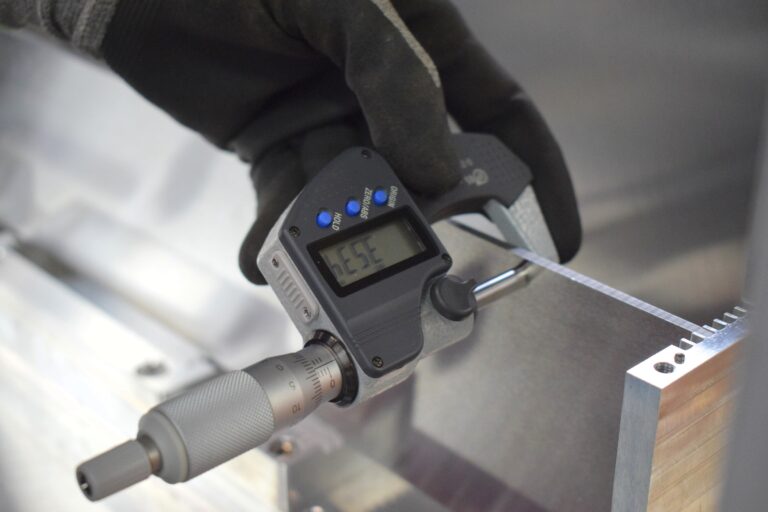
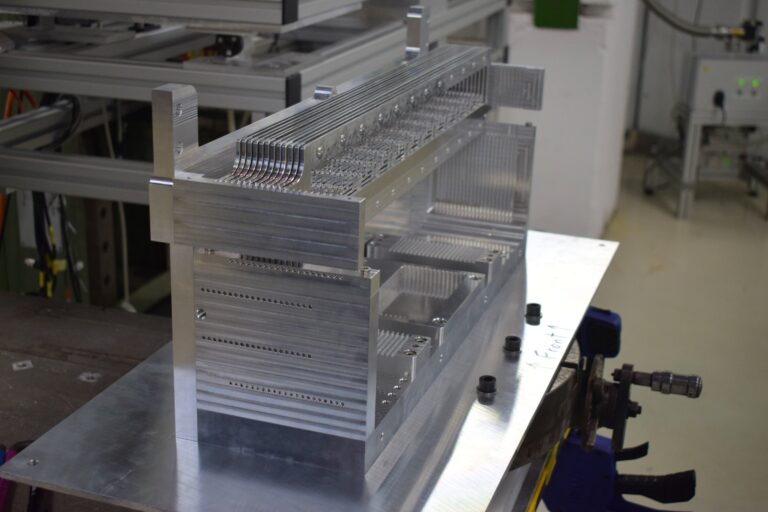
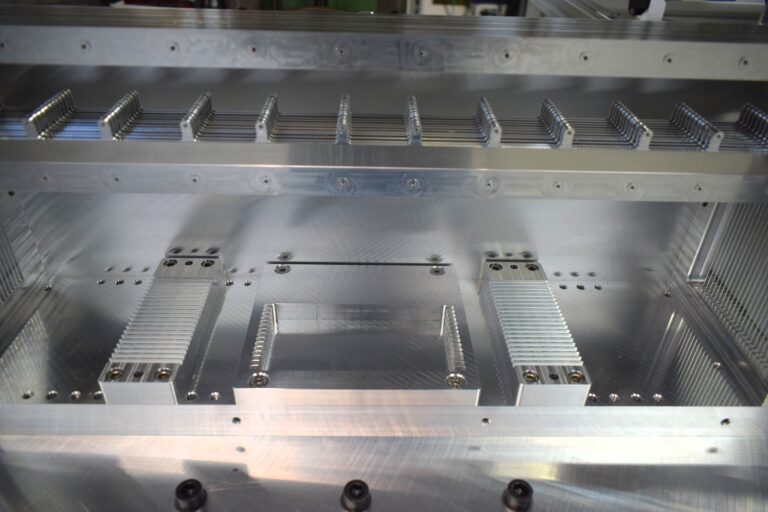
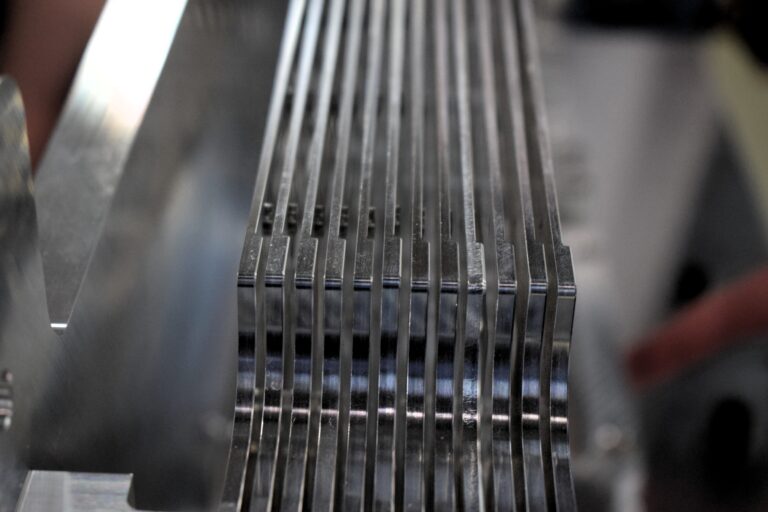
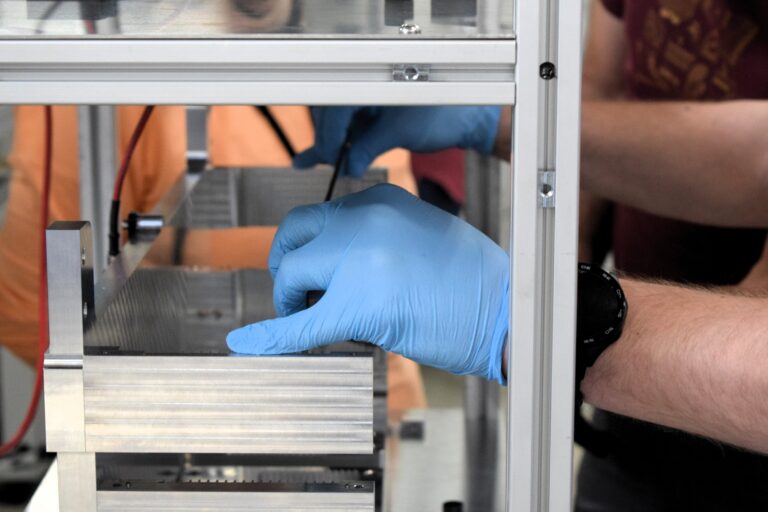
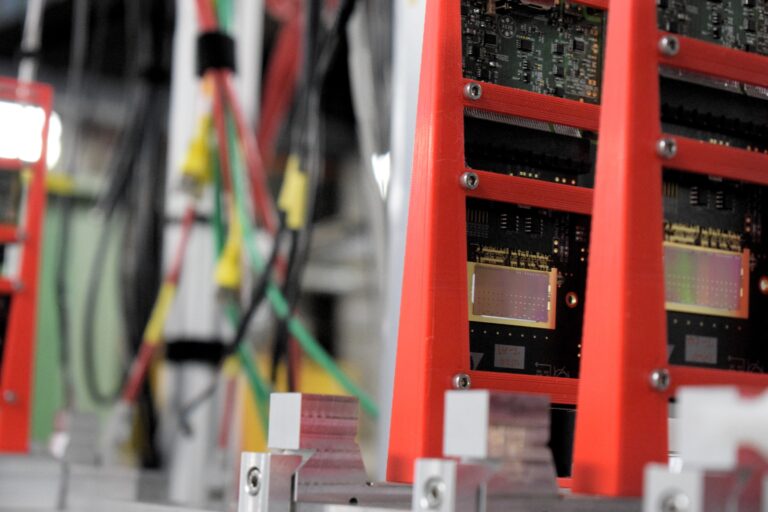
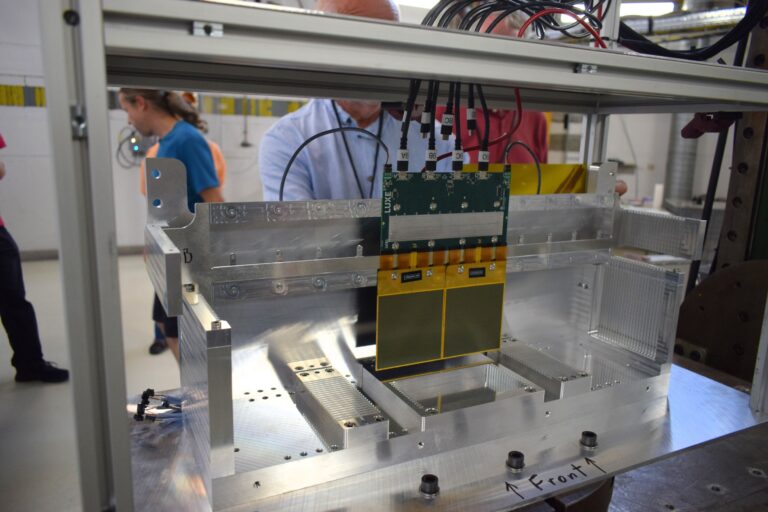
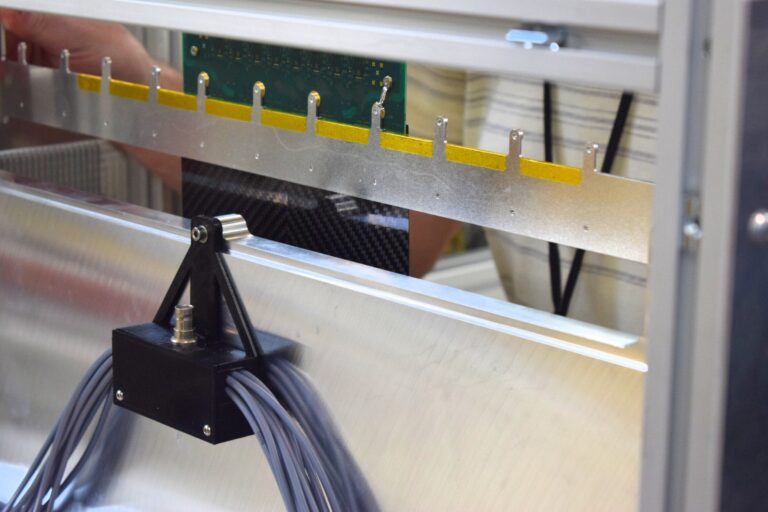
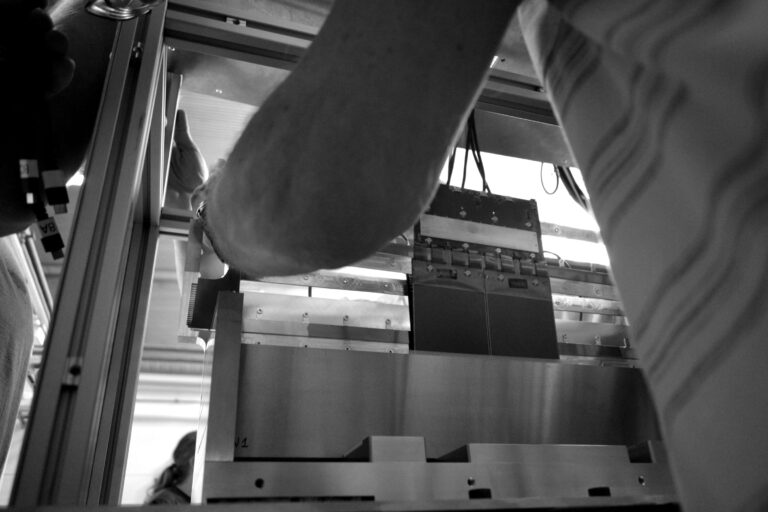
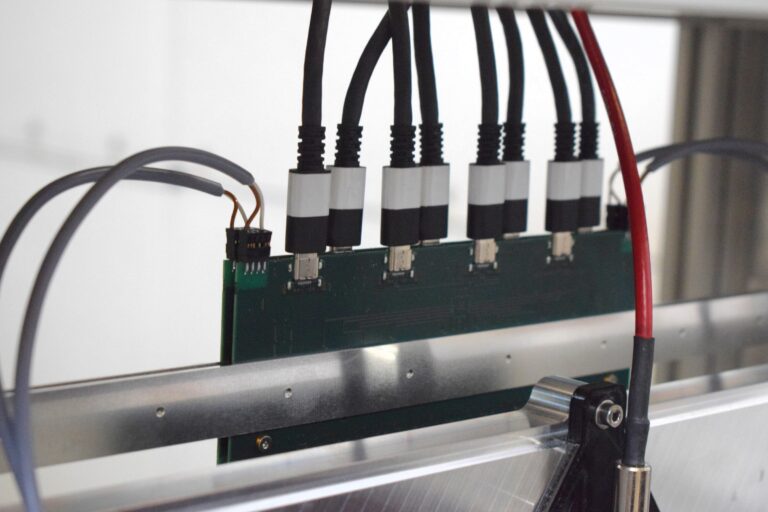
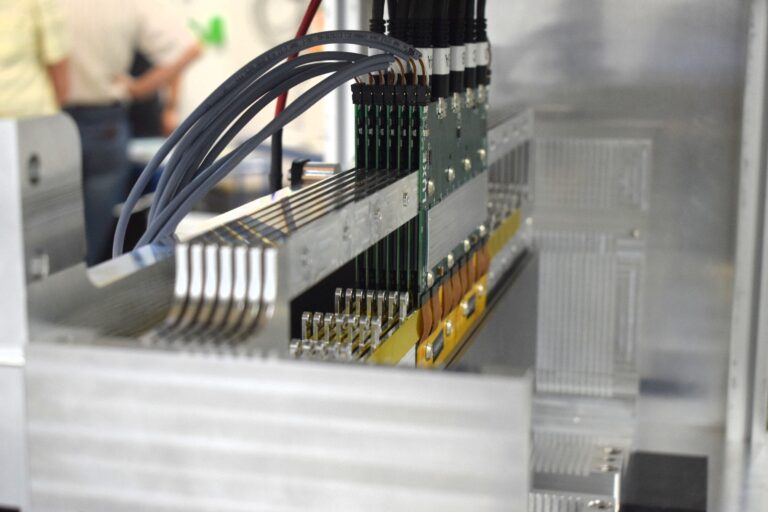
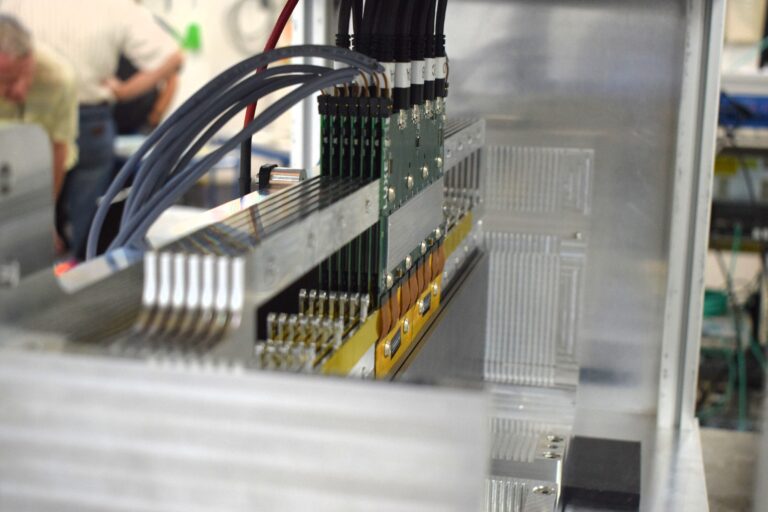
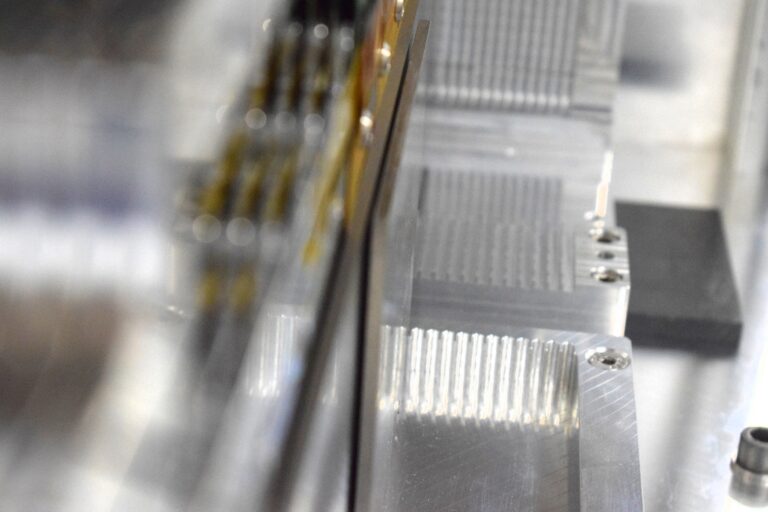
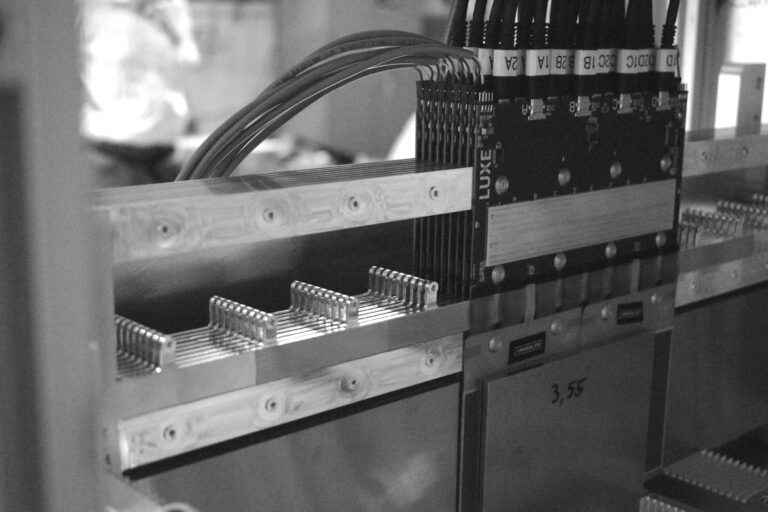
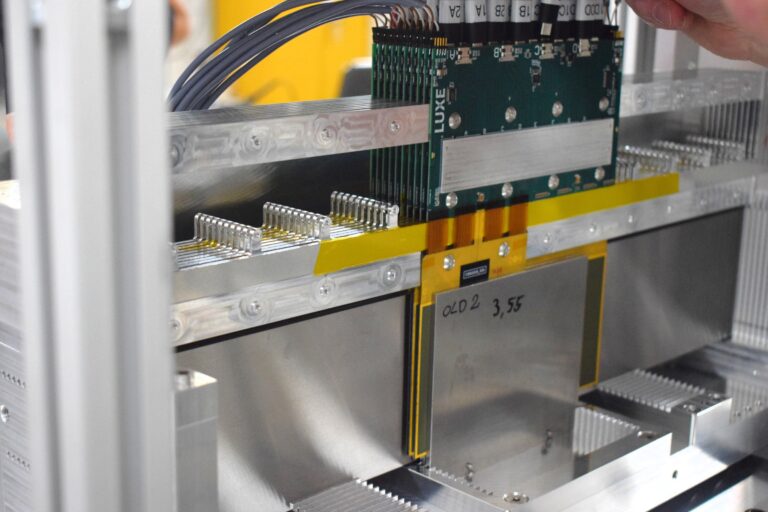
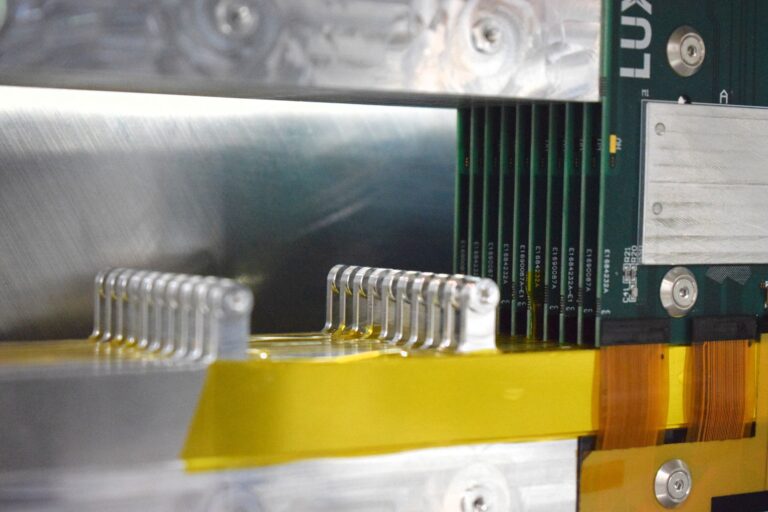
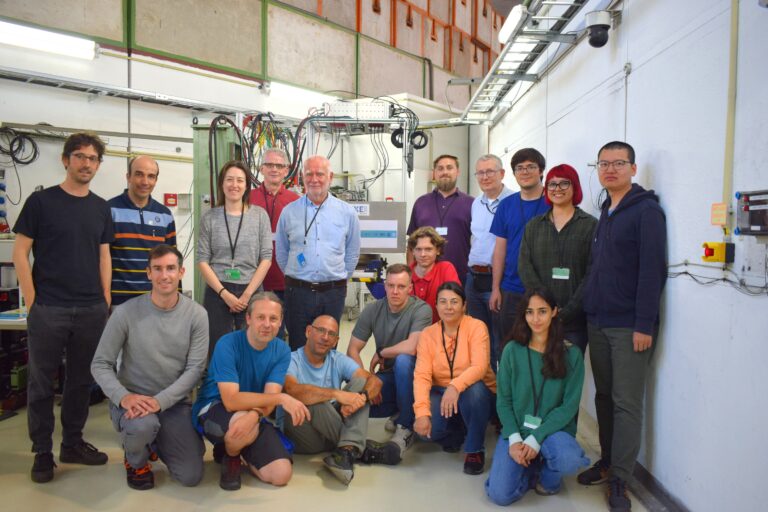
Semi-online reconstruction of real 5 GeV electrons interacting with a fully instrumented calorimeter with 12 X_0 of thickness. In this representation, the beam particle come from the «bottom» and the shower develops vertically. The events are synchronized online with the AIDA-TLU (trigger Logic Unit) and with the newest ALPIDE telescope in DESY. No filtering or event selection has been applied beyond the online zero-suppression for data-quality checks.
© D. Pietruch
Over the last 5 years, part of these activities and/or members of this group may have received funding from:
– Generalitat Valenciana (Spain) under the grant number CIDEGENT/2020/21 and via the Excellence Grant CIPROM/2021/073.
– MCIN funding from the European Union NextGenerationEU and Generalitat Valenciana in the call Programa de Planes Complementarios de I+D+i (PRTR
2022) through the project with reference ASFAE/2022/015
– the Program Programa Estatal para Desarrollar, Atraer y Retener Talento PEICTI 2021-2023 through the project with reference CNS2022 − 135420;
– the Spanish MCIU/AEI / 10.13039/501100011033 and European Union / FEDER via the grant PID2021-122134NB-C21
Comparte esto:
- Haz clic para compartir en X (Se abre en una ventana nueva) X
- Haz clic para compartir en Facebook (Se abre en una ventana nueva) Facebook
- Haz clic para compartir en LinkedIn (Se abre en una ventana nueva) LinkedIn
- Haz clic para compartir en Reddit (Se abre en una ventana nueva) Reddit
- Haz clic para compartir en Telegram (Se abre en una ventana nueva) Telegram
- Haz clic para compartir en WhatsApp (Se abre en una ventana nueva) WhatsApp
- Haz clic para enviar un enlace por correo electrónico a un amigo (Se abre en una ventana nueva) Correo electrónico




Deja una respuesta